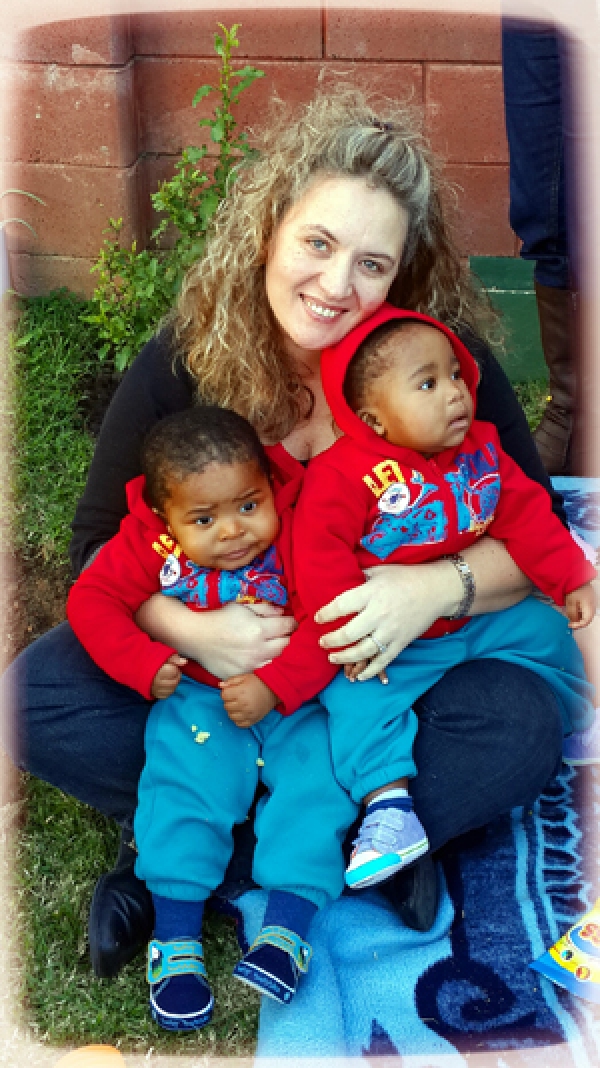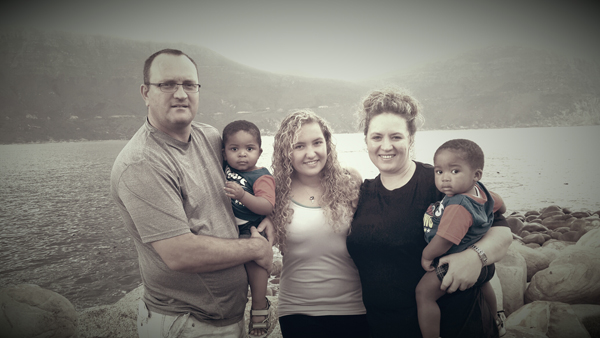Adoption and race: we unpack the issues

Adoption of children across the the old apartheid categories is on the increase, according to the Department of Social Development. There were 936 such adoptions in the last three years. GroundUp unpacks some of the issues on what the department calls “trans-racial” adoption.
Overall, however, adoptions are declining. Instead, more children are being placed in foster care these days, due to the foster care grant. The department also lacks accredited social workers.
Getting on to the department’s Register of Adoptable Children and Prospective Adoptive Parents (RACAP) involves a lengthy vetting process. One couple told GroundUp they struggled for months just to secure an interview with a social worker. Currently, there are about 500 children and 340 parents on the register.
The department’s policy is to try and find parents of the same “race” as the child to be adopted. “Transracial” adoption is considered a second best option.
National spokesperson for the Department of Social Development Lumka Oliphant said the Children’s Act stipulated that factors such as the child’s social and cultural development, including the child’s need to maintain a connection with his or her culture and tradition, must be taken into consideration.
Priority is therefore given to “same race adoption” as it “resembles a natural family”.
But Oliphant said parents of other races were given the opportunity to adopt a child once it was clear there were no prospective parents of the same race.
“Adoption social workers first try to place a child within a family of the same race and culture. It is this that makes it almost impossible for a black family to adopt a white child. It is also important to realise that adoption social workers look for families for children and not children for families,” said Oliphant.
Some prospective parents waited three years or more for children of the same race.
“The challenge in this regard is that white babies available for adoption are very scarce in South Africa and the waiting list for white families wanting to adopt a white child is extremely long,” said Oliphant.
“Based on the information that white babies are not available for adoption some white prospective adoptive parents opt to adopt children irrespective of the race difference. The decision lies solely with the prospective parents,” said Oliphant
Parents Wendy and Hein Jourbert, who are white and have adopted a black boy and girl, said people should adopt out of love and because they want children, not to do the child a favour.
“Understand that this is something that will be apparent in your life forever … We’re not going to get darker while they lighten over time … We will never fit the norm as far as family goes, no matter how normal it may seem to us,” said the couple.
However, some people are against the issue of transracial adoption and it is a controversial issue among traditionalists.
A former lecturer in the Department of Religious Studies at the University of Cape Town, Dr Nokuzola Mndende, said black children adopted by white parents lost touch with their culture and ended up losing their identity.
“We shouldn’t only look at finance, education and the fact that they have a roof over their heads. We should look at the growth of the child as a whole in terms of their identity,” said Mndende.
In many black cultures when a child is born that child belongs and is guided by the ancestors that carry the clan name. In the case of adoption that order is disturbed. Depending on the environment in which the child is raised, knowing the clan name can be very important. For instance, when a male child is to go to the mountain in order to be circumcised and become a man, the clan name needs to be known.
Adoption social worker from Child Welfare South Africa Carey Sheffield-Webb said when matching a child with a suitable family, social workers must first look for prospective adoptive parents of the same race, culture and religious background.

The Brenkman family with their two adopted sons Ethan and Deagan. Photo courtesy of the family.
“Unfortunately there are not enough black adoption applicants; this means that we are not always able to place black children with black families. If we are unable to find a family of the same race and culture for the child then we have to consider a transracial placement.
“There are currently far more white adoption applicants and therefore black children are placed with white families as it is in their best interest to be placed within a stable family environment, even if not racially or culturally the same as their own, instead of growing up in child and youth care centres,” she said.
She added that white families were encouraged to educate the child about his or her cultural background and language of origin as this is an important part of the child’s identity.
The greatest challenge, say the Jourberts, have been the comments that other people make oblivious to the impact what they say has on the child.
“If they looked like us, we would be able to choose when we discussed their adoption with them. Looking so obviously different means that people ask questions that require us to be ready to answer at any time.
“It also means that we need to be deliberate in cultivating a sense of belonging, since no-one will see that ‘my child has my nose’
“Our belonging has to be more than skin-deep,” says Wendy Joubert.
A South African mother of an adopted black child who wished to stay anonymous told GroundUp she finds the department’s argument that a child or baby given up for adoption somehow still belongs to a ‘culture’ from birth potentially problematic.
She believes it stems from the a notion that a child “belongs” to a community or that it “takes a village to raise a child”, when the reality of the urban modern world is very far from this ideal. When children are then abandoned (60% of adopted children) or put up for adoption (less than 40% of the time) there is an underlying “shame” which plays into fears of white people taking things from Africa.
The notion that a child belongs inherently to a culture that must predetermine its life by virtue solely of the child’s African paternity is in a sense a metaphysical idea. Unlike a Romanian or Russian baby, the black child is not seen as born free, but attached to its ancestors, culture or community. And the practicalities particularly of engaging with this when a child has been abandoned or when his or her physical origin is unclear present interesting challenges.
However, in the United States, too, many black social workers are dead set against white people adopting black children.
“What if a child is the result of rape or unwanted sex?” asks the mother.
“Of course there are issues about dealing with the extremely important issue of race and how, as a white person, I may or may not understand the complexities of what it means to be black in the world. But that assumes that as a white person I am somehow unwilling or unable to find a sense of belonging in a country with multiple identities. This is simply not true.”
“For me the point is that my child is being raised as a conscious South African, one who understands fully her blackness and the cultural framings of her body over the centuries. She is a free individual who understands the context of the accident of her birth and the circumstances surrounding it as much as we know. Her abandonment is never spoken of without addressing the conditions or reasons for why a mother might choose to do so.”
“She will be aproud, strong, black woman who hopefully identifies fully with the society we live in with all its difference. She will hopefully learn to speak at least three of our mother tongues.”
The mother told GroundUp that based on her experience, the current adoption policy is somewhat misguided; it is perpetuating apartheid categories even if unintentionally.
“My child is quite light skinned and people often suggest she is ‘coloured’. If she were ‘coloured’ should I raise her? Should we be part of the Kaapse Klopse? Should I speak to her in Afrikaans? You see where this thinking leads … A child needs an absolutely secure, loving attachment, and that is what I hope I am providing.”
In some cases, such as abandoned babies (in 2010, the latest figure available, there were 3500), the paternity — and therefore the “race” or ethnic group — of the child (whether the baby is Xhosa, Sotho, Tswana, Zulu, Venda) is not known. In what tradition then should the child be raised by virtue of her or his skin colour?
“The challenge is not to deny a child’s skin colour or suggest it is irrelevant but to find other ways of belonging and an ability to live with multiple-identities. If my daughter should one day feel she would like to explore her roots I would accompany on that journey with the limited information we have,” said the mother.
It is a fact that many children linger in places of safety for far too long while understaffed agencies artificially try to “match” a child when a perfectly appropriate white family has to wait. These early months are crucial for so many developmental issues, including bonding with the parent. The longer a child is left in a system because of the policy or the law the more detrimental it is to all concerned.
GroundUp asked the National Department of Social Development what was the average age of children adopted across the old apartheid categories when they were finally placed. The department replied that most children when they are finally placed are three months to two years old.
According to the most recent research by National Adoption Coalition SA, in November 2013, of the 297 unmatched parents, 190 were white; of the 428 children waiting on RACAP, 398 were black (only three were white, nine were described as being ‘mixed race’, the remainder unspecified).
How many of these white parents were waiting ready to accept a child of any colour could not be determined at this time.
Next: The need for special needs schools
Previous: How heritage got roasted

This article is licensed under a Creative Commons Attribution-NoDerivatives 4.0 International License.


